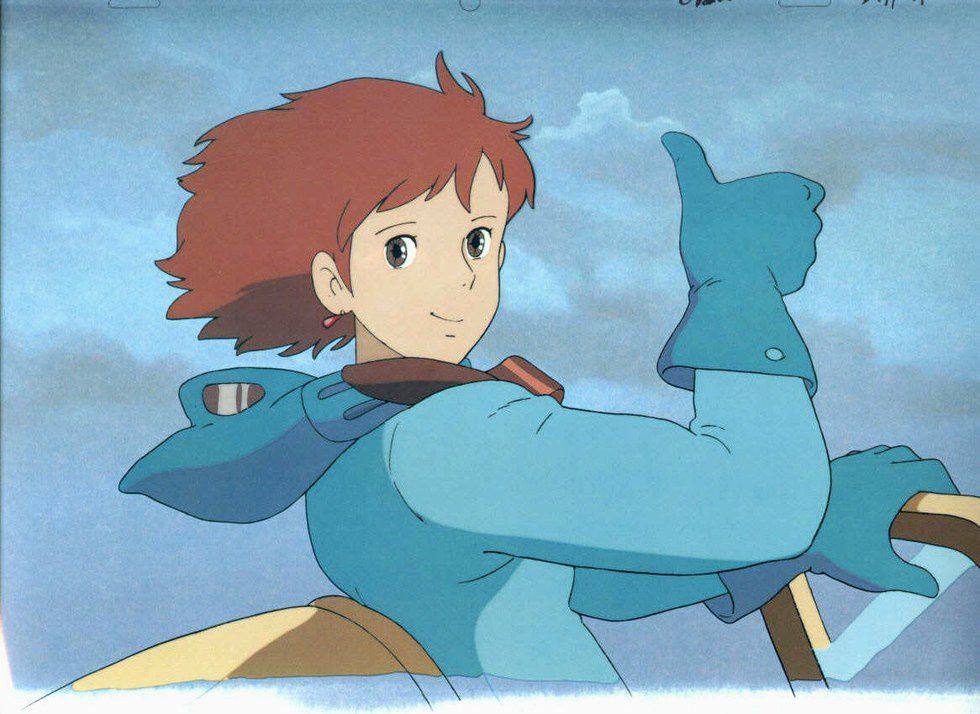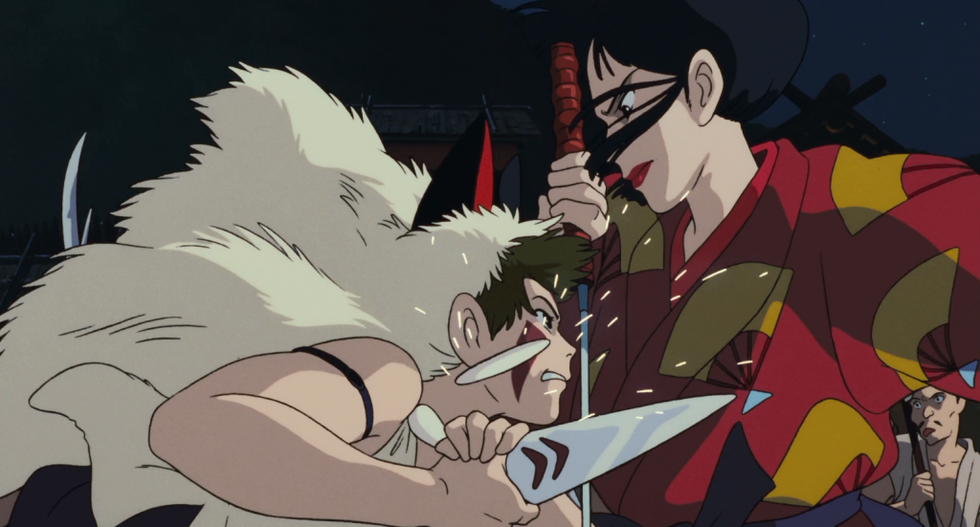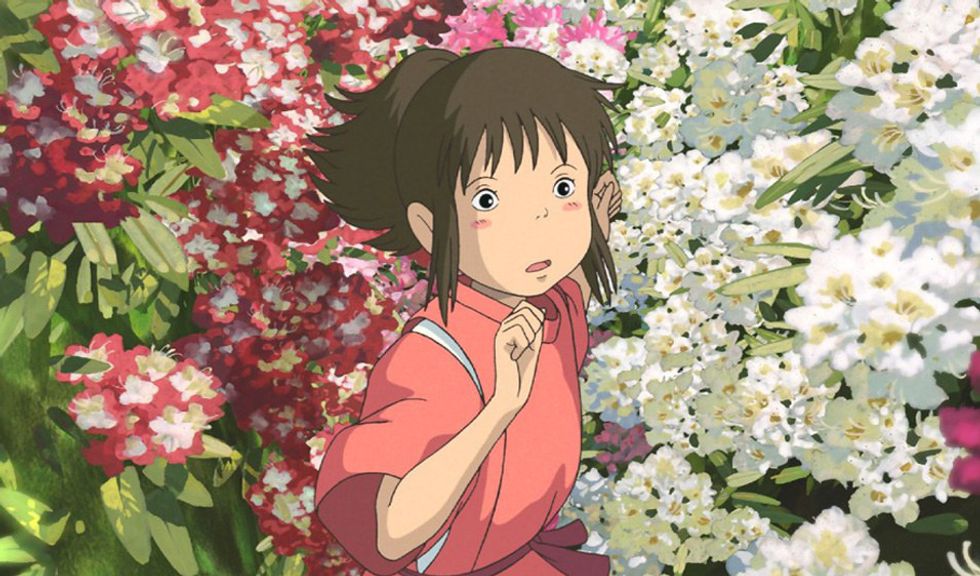Back in October, I wrote an article about Hayao Miyazaki and how his views on environmentalism and pacifism reflect in his films. Both ideas greatly influence how he creates and tells stories, but it’s important to also look at the characters of the films. Out of the thirteen titles to Hayao Miyazaki’s name, seven of them include female protagonists and three more films are either female co-protagonists or core characters to the story; that’s only counting who serves as the main cast. In every film, women play a strong and meaningful role in some way and every character has a certain depth that breathes life into their role. I’m taking a look at a few of these films and how the characters are written that include extremely realistic depictions of women.
Nausicaa of The Valley of the Wind
This film was Miyazaki’s second major feature with Studio Ghibli and the first to feature a female protagonist. Nausicaa is a princess of the last functional kingdom in a post-apocalyptic world. Despite her role and duties, she can’t ignore her desire to find a solution to curing the Toxic Jungle that grows outside of her kingdom in order to better the world. Lord Yupa, someone who travels and surveys the destruction of the Jungle, is shocked to find that Nausicaa found the cure through experimentation. Nausicaa continuously takes charge and thinks on her feet, has an adventurous spirit, and manages to find solution after solution to the conflicts in the narrative. Everything she faces she does with courage and selflessness, even when she herself feels fear.
Even Kushana, one of the main antagonists, is a character who has a lot of depth to her story; she’s a trained military general and princess from another empire and had trained the enemy army herself. She’s ruthless in battle but has a certain code of honor that allows for people to respect and admire her. While she wishes to hold onto Nausicaa’s values that are centered in pacifism, she believes her and her empire are meant to war. Her antagonistic personality doesn’t truly stand from heartlessness, it comes from fear. This is revealed as slowly she changes in the film, becoming a more caring person and worried about Nausicaa’s safety. She only did what she believed was right, and saw quickly that she was wrong.
Princess Mononoke
Princess Mononoke features the main character, Ashitaka, trying to find a cure for his cursed arm after battling a corrupted demon. He meets two women who both serve as antagonists towards each other; Lady Eboshi of Irontown and San, a young warrior raised by the wolf goddess Moro. Soon the conflict becomes clear; Lady Eboshi had cut away the forest to produce iron, angering the Gods in the forest. San is a character who’s strength resides in her loyalty to Moro, her adopted mother in a way. Her only goal is to see the preservation of the forest, but in the end, accepts a compromise between her and Irontown thanks to Ashitaka. No one can tell her how to live in the end, and she continues to remain in the forest, though she doesn’t resent humanity as much as she used to.
On the other hand, Irontown isn’t an antagonist either; while harming nature, Lady Eboshi acts out of desperation for protection from a Daimyo; she wants safety for the people she’s provided refuge to. Once Ashitaka discovers that this town actually serves as a safe haven for former brothel workers and lepers who manufacture firearms for sale and for protection against demons, the situation becomes more complicated. Lady Eboshi’s and San’s motivations both come from desperation and care; San cares about the forest and the wolves who raised her, and Lady Eboshi cares for the people of her town. These two characters both have deep issues that run and clash against one another and present a very humanistic view to a story.
Spirited Away
Chihiro was chosen to be the protagonist for Spirited Away because Miyazaki longed to create a film where a child could be a child amidst the journey she takes. Throughout the film, Chihiro behaves just as any ten-year-old would, but what sets her apart is her determination to find her parents. Throughout every trial, she keeps her goals in sight and makes friends who identify with her hopes and her aspirations in that moment. Chihiro tries her hardest to be able to get her parents back and gets swept up in the world around her as she tries to help the other characters around her, too. She does her best not to lose sight of who she is, even when the owner of the bathhouse Yubaba takes her name from her and renames her Sen. She expresses her courage numerous times, even going as far as to leave the bathhouse to find Yubaba’s sister. Miyazaki has pointed out that in creating Chihiro, he wanted to create a girl who already had what she needed to succeed in her, but because of the situation she doesn’t have to grow up, those personality traits inside her are pushed to the forefront. Chihiro is definitely one of the characters in Miyazaki’s film that gives the film she’s in a soul.
These three films represent the beginning and middle of Hayao Miyazaki’s work, but each of his films has rich, wonderful protagonists that are filled with care. Anyone who writes should pay attention to how these characters are written because each character has special characteristics that just add depth to a great story. Next week, I’ll continue this with a part two on Howl’s Moving Castle, Ponyo, and The Wind Rises.










 Energetic dance performance under the spotlight.
Energetic dance performance under the spotlight. Taylor Swift in a purple coat, captivating the crowd on stage.
Taylor Swift in a purple coat, captivating the crowd on stage. Taylor Swift shines on stage in a sparkling outfit and boots.
Taylor Swift shines on stage in a sparkling outfit and boots. Taylor Swift and Phoebe Bridgers sharing a joyful duet on stage.
Taylor Swift and Phoebe Bridgers sharing a joyful duet on stage.











